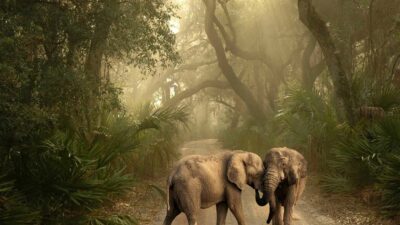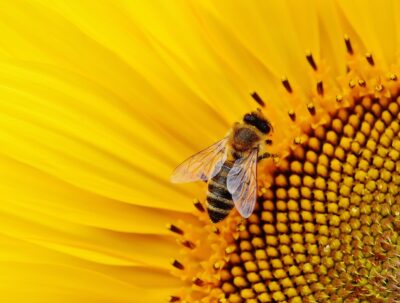Or why saying “we’re the voice for the voiceless” isn’t accurate anymore
The concept of agency has long been associated with human beings, allowing us to make choices, act upon them, and advocate for ourselves in various situations. However, the notion of agency is not exclusive to humans. In recent years, scientists and researchers have been exploring the idea that animals, too, possess agency.
This article is partly inspired by the recent story that has people in Spain on the edge of their seats: Gladys, the orca who’s teaching other whales how to attack the boats that are sailing the coast. Scientists still don’t know why she’s doing what she’s doing, but their theories are quite entertaining and it does demonstrate that Gladys is an orca of her own.
Animal Ethics defines agency as: awareness that one is acting with intent.
Agency, then, is the ability to make choices, and exhibit behaviours that serve their interests or express their preferences. While animals may not possess language comparable to us humans, they still have a rich repertoire of communication methods and display intricate behavioural patterns that convey their agency. We also don’t have their numerous abilities: flying, camouflaging, having an inner sonar that acts like a compass… understanding and honouring these differences, is what would allow us to be more human with the non-humans.

Social Communication and Cooperation:
Numerous social animals exhibit complex forms of communication and cooperation within their groups, highlighting their agency in interacting and coordinating with others. Bees, for instance, communicate the location of nectar sources to their hive mates through intricate “waggle dances.” This form of communication enables bees to inform their fellow workers about the distance, direction, and quality of a food source, facilitating the collective decision-making process and enhancing the hive’s overall efficiency. Way cooler than tweeting, right?
Tool Use and Problem Solving:
The ability to use tools and solve problems is another remarkable demonstration of animal agency. Many species demonstrate the capacity to fashion and employ tools to accomplish specific tasks. For example, certain bird species, such as the New Caledonian crow, fashion and use tools to extract insects from tree bark. This behaviour reveals their ability to assess their environment, develop strategies, and manipulate objects to meet their needs—a clear demonstration of agency. Even so, many think that they don’t just do this to accomplish something but because they enjoy the process itself, or just for the sake of it. A crow flow state maybe?
Octopuses are also well known for their capacity in using tools to escape their aquaria prisons. Here are five times octopuses made headlines and why by PETA.

Self-Awareness and Emotional Expression:
Self-awareness and emotional expression are key indicators of agency. Dolphins, for instance, exhibit self-recognition by passing the “mirror test.” When marked with a dye that can only be seen in a mirror reflection, dolphins show signs of self-directed behaviour, suggesting an awareness of their own bodies and the ability to distinguish themselves from their surroundings.
There are many videos and physical proof of elephants mourning the loss of a deceased family member: showing behaviour indicative of grief; staying close to the body, gently touching it with their trunk; and emitting low rumbling vocalisations. These expressions of grief illustrate the agency of elephants in experiencing and expressing complex emotions.

The Cambridge Declaration of Consciousness says: “Convergent evidence indicates that non-human animals have the neuroanatomical, neurochemical, and neurophysiological substrates of conscious states along with the capacity to exhibit intentional behaviours. Consequently, the weight of evidence indicates that humans are not unique in possessing the neurological substrates that generate consciousness. Non-human animals, including all mammals and birds, and many other creatures, including octopuses, also possess these neurological substrates.”1
Remember that we defined agency as the awareness of acting with intent? So the answer to “does my cat know they are the best?” would be yes. They are aware, and they act accordingly.
Negotiation and Conflict Resolution:
Animals often engage in negotiation and conflict resolution strategies, showcasing their agency in social interactions. Bonobos, known for their peaceful social structure, utilise various social behaviours to manage conflicts. They engage in affiliative behaviours, such as sexual activity, embracing, and sharing food, as a means to reconcile and restore harmony within their groups. By employing these strategies, bonobos demonstrate their agency in navigating social dynamics and fostering cooperative relationships. Scientists also believe that they are “our evolutionary model” to our current human society. We’re not saying you should try all of their strategies at your next neighbourhood meeting, but they do know a thing or two about having a peaceful society…

A personal example by this author: Our cat Minerva was the “peace-maker” at home when Luna, my sister-in-law’s dog, came to visit. Our other cat, Juanita, wasn’t as happy and comfortable as Minerva, so Minnie, the younger, placed herself between both of them, even receiving a few slaps from Juanita directed at Luna. She never left her side during the visit either. In this kind and patient way, she was showing them both there was no need to be afraid of each other and they could stay cool. The visit ended with the three of them sharing my office and napping together.
Vocalization and Communication
While animals may lack the linguistic complexity of what we understand as human language, they do have a diverse range of vocalisations that serve as a form of communication and self-expression. For instance, whales produce complex songs that can travel across vast distances, potentially serving as a means of long-distance communication and maintaining social bonds. The mothers also produce a sound that the scientific community has described as “cooing their young”. Those meditation apps playing whale-sounds to help you sleep should be paying royalties to whale-mamas.
Similarly, birds utilise intricate (and beautiful) songs and calls to establish territories, attract mates, and convey specific information to others. These vocalisations reflect their agency in communicating their needs, desires, and establishing social connections.
Also, don’t you understand perfectly when your cat or dog wants food or needs to play with you just by the different modulations in their voice? A different type of ‘meow’ or ‘bark’ will be used in different situations.
If you think about it for a bit, you’ll know that it’s true, animals do have agency: a cow mum crying because the farmer took her baby away; when your dog knows you are upset and keeps close company; a deer defending their family from a hunter can also be seen as agency and not just mere “instinct”.
This is why we as animal advocates can’t really say “we are the voice for the voiceless”. Maybe animals can’t approve laws to benefit themselves, write a clever sign for a protest, or understand our complex human world completely, and neither can I, honestly. But scientific research has provided enough compelling evidence for the existence of animal agency, so we can expand our understanding of them and their complex and wonderful capabilities. We now know for sure that animals act with intent and advocate for themselves in many diverse ways.
Recognising and respecting the agency of animals is crucial for fostering a more inclusive and compassionate perspective on our shared world and for our vegan movement. By doing so, we can strive towards a more harmonious coexistence with the incredible array of creatures, sentient and conscious, who inhabit our planet. This could also leave us with the impending question: how well are we advocating for them?



